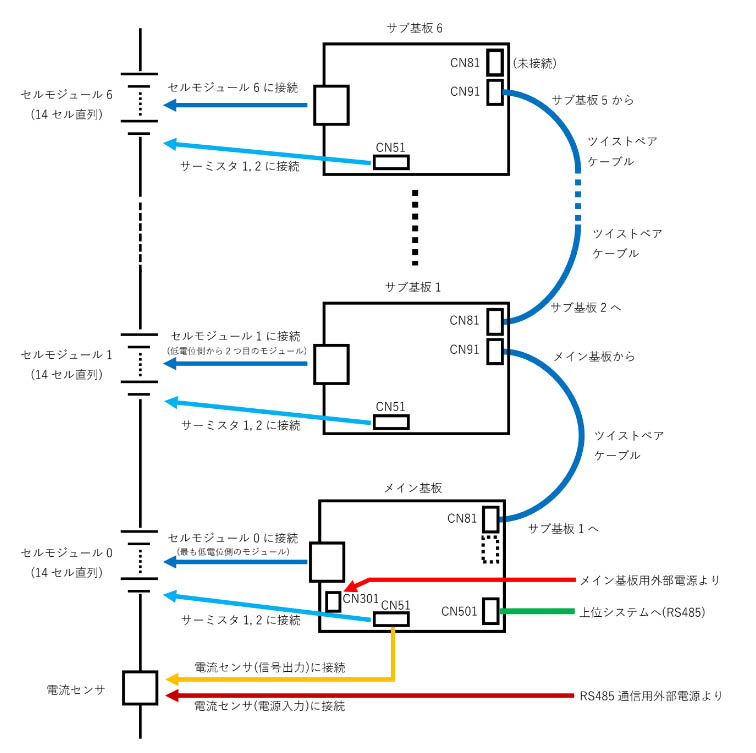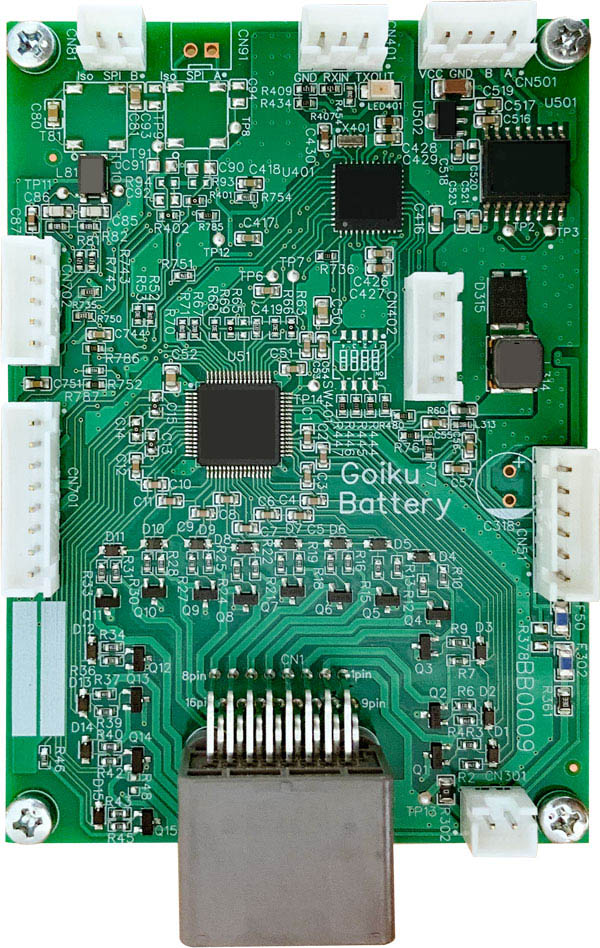What is Battery Management System?
- When using high-efficiency, energy-dense lithium-ion batteries, control by BMS (Battery Management System) / BMU (Battery Management Unit) is necessary for safe and effective use due to the risk of ignition and smoking.
- It eliminates and balances voltage differences between cells (single batteries) connected in series within a battery module (battery assembly).
- Measures the cell voltage, current, and temperature of the battery module, and if they exceed the specified ranges, disconnects the output terminals to protect against overcharge, overdischarge, overcurrent, etc.
- Controls power supply by measuring remaining battery charge.
What is a cell?
A cell is an individual battery, also called a single cell. By connecting multiple cells together, their size can be increased to make a battery module, thereby increasing the amount of power supplied. Individual cells are mainly used in mobile devices and other devices with relatively low energy consumption.
What is a battery module?
Battery modules consist of multiple individual batteries called cells that are connected together. Battery modules are available in a variety of configurations and sizes depending on the intended use. They are mainly used as power sources for small electronic devices and transportation vehicles such as automobiles and airplanes.
Introduction to g-BMS
Four improvements over our previous BMS
- Improved cell voltage measurement speed
- Increase in the number of cells that can be handled per unit: ・・・3 cells → 15 cells a five-fold increase
- Miniaturization of the substrate 100mm×70mm
- Various parameters can now be set by the user
Various parameters can be set from a PC application by connecting the g-BMS configuration port to a PC USB port via USB-UART interface.
Main Features
- Target battery:Lithium-ion battery (nominal voltage 3.2V to 3.8V)
- Maximum number of cells per board::15cells (minimum 3 cells)
- Multiple boards can be daisy chained:up to 32 boards
- Equipped with passive balancing
- Temperature sensor (thermistor) )connectable:max. 2
- Current sensors can be connected








